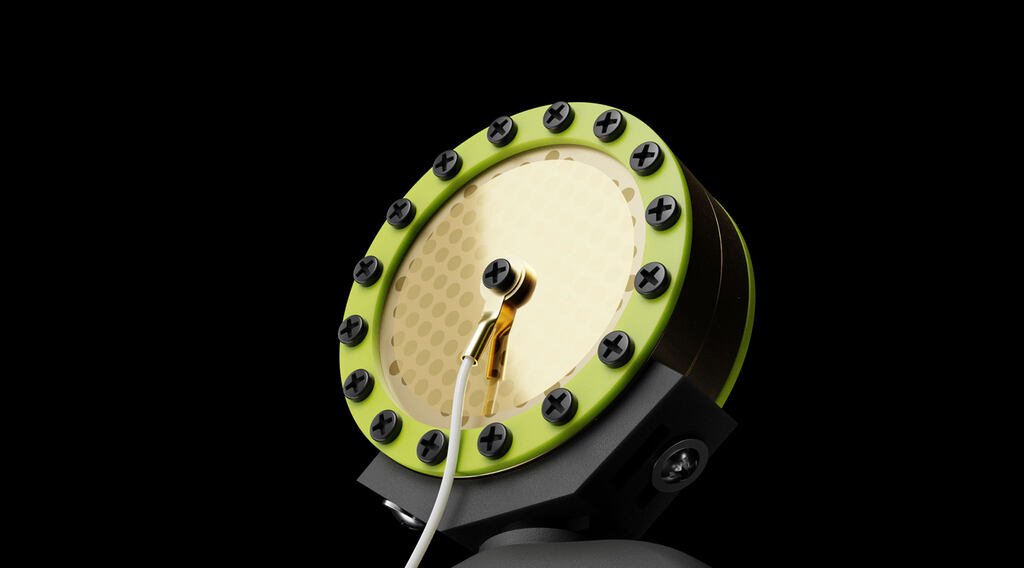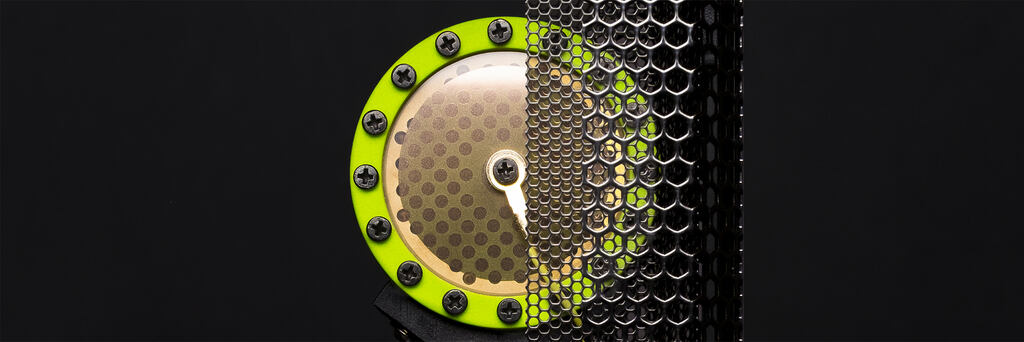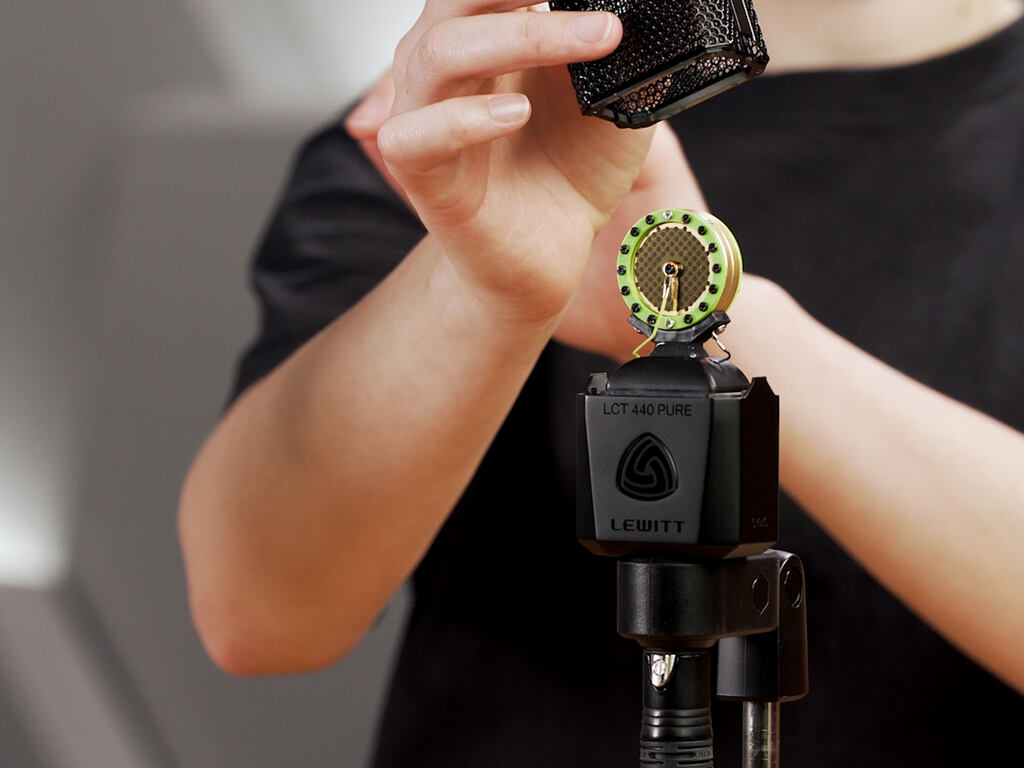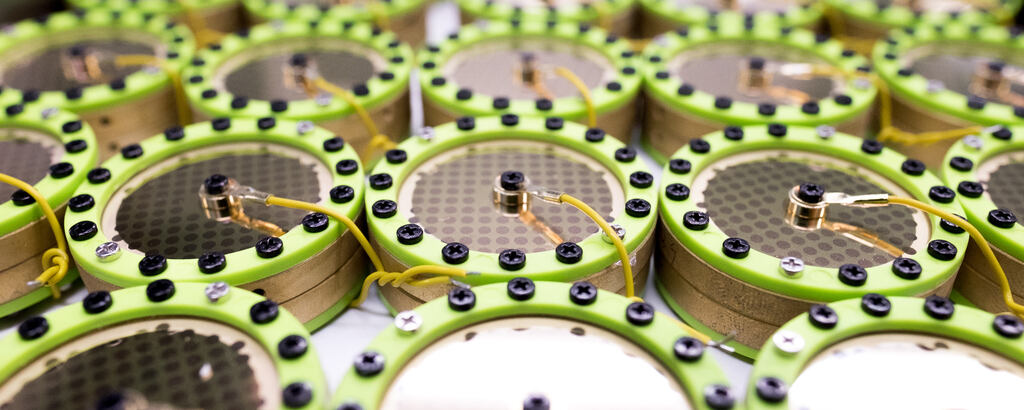
Blog
True love for great sound unites us.
Blog
True love for great sound unites us.
A microphone is essentially the sum of the capsule, housing, and electronics. They all matter and need to be designed to make them work as one.
Still, the capsule is often viewed as the heart and centerpiece of a microphone. Rightfully so!
After all, it is the part that converts our beloved sound waves into an electric signal, the beginning of any recording.

We are creating capsules with Record-Ready sound and outstanding technical performance.
Our (now) signature Record-Ready sound delivers the "this feels and sounds right" moment from the start. There is no need for endless tweaking, which makes recording and post-production more fun and easy.
Our studio microphones deliver Record-Ready sound.
Technical goals of our design:
Low self-noise
Our design ensures noise-free recordings even with heavy processing typical for modern music production.
High maximum SPL (sound pressure level)
Our design handles high sound pressure levels, so you don't have to worry about overloading the microphone.
Polar pattern with excellent off-axis rejection
To capture the desired signal and avoid unwanted background noise and reflections, our capsules come with a consistent polar pattern / pickup pattern and superb off-axis rejection. This is helpful when recording in less-than-ideal conditions, such as acoustically untreated rooms, a home studio, or a live multi-track recording session with multiple instruments in the room.

We use a center terminated design, and the diaphragm is made of a 3-micron thin, gold-sputtered mylar.
To achieve industry-leading self-noise, we run higher polarization voltages than the classic microphone designs of the past. The higher the voltage, the higher the sensitivity, and the lower the self-noise.
The challenge is tuning it so that those ultra-high sensitivity capsules can withstand ear-shattering sound pressure levels.
We are proud to have achieved this balance.
LEWITT capsules have low self-noise, high max SPL, and excellent off-axis rejection.
With our capsules, our electronic engineers can push the boundaries of microphone designs and know the capsule will be a reliable part of the circuit.
Check out the blog here to learn more about how a microphone works.

For our studio microphones, we have two main types of capsules:
You can quickly identify them by looking at them. Fixed cardioid capsules have a passive back membrane and have one wire attached to the front membrane. Multi-pattern capsules have two wires, one to the front and one running to the back membrane.
A cardioid polar pattern is most commonly used for vocal recordings, and for more advanced recording techniques, multi-pattern capsules are essential.
Check out our blog to learn more about polar patterns.
Both capsules are designed for recording with perfect detail and can handle polarization voltages of up to 80 V.
The LC80 is used in the LCT 440 PURE, and the LM80 is in the LCT 441 FLEX.
When you push the limits of what is possible, the result becomes exponentially more difficult to achieve and, hence, more expensive, like for our LC100 (cardioid) and LM100 (multi-pattern) capsules.
Compared to the high-end capsules:
This design allows for unique capabilities in combination with the electrical circuit. For example, the LCT 540 S is the quietest microphone in the world, pushing self-noise below the threshold of human hearing. Another example is our Perfect Match technology, which ensures that two units of the same model will always form a matched pair.
For example, LC80 = LEWITT Cardioid 80V

| Microphone | Capsule | Polarization voltage | Polar pattern | Special features |
|---|---|---|---|---|
| LCT 440 PURE | LC80 | ~ +80V | Cardioid | |
| RAY | LC80 | ~ +80V | Cardioid | Autofocus for your voice, MUTE by Distance |
| LCT 441 FLEX | LM80 | ~ +80V | Multi-pattern | |
| LCT 540 S | LC100 | ~ +100V | Cardioid | Perfect match technology |
| LCT 640 TS | LM100 | ~ +100V | Multi-pattern | Perfect match technology |
| PURE TUBE | LC100 | ~ +100V | Cardioid | Perfect match technology |
| LCT 1040 | LM100 | ~ +100V | Multi-pattern | Perfect match technology |
These capsules form the heart of the LEWITT studio microphone line. We are proud to have capsules and products that push microphone technology forward and provide real benefits to our users.
If you have any questions about our capsules or microphone design in general, feel free to get in touch through social media or email.